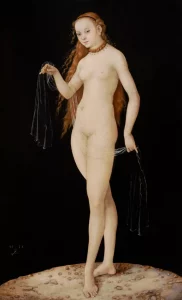European authorities have long suspected the Italian art dealer Giuliano Ruffini of being at the center of one of the largest Old Masters forging networks in Europe. He and his colleagues allegedly created fake paintings and passed them off as originals by Orazio Gentileschi, Frans Hals, Parmigianino, and Lucas Cranach the Elder. Investigators in both France and Italy had to overcome many roadblocks, but they finally got their man. Giuliano Ruffini was arrested in Italy last Friday on fraud, money laundering, and art forgery charges.
For over three decades, Ruffini dealt in Old Master paintings, selling them for millions through intermediaries to major museums and galleries worldwide, including the Metropolitan Museum of Art in New York, the National Gallery in London, and the Kunsthistorisches Museum in Vienna. Evidence also suggests that Ruffini sold a forged Lucas Cranach Venus painting that, in only a few months, made its way to the Colnaghi Gallery, one of the most famous Old Master galleries in the world. Colnaghi then sold the fake Cranach to the Prince of Liechtenstein in 2013 for €7 million, even after specialists at Christie’s could not fully authenticate the work due to inconclusive tests. French authorities opened their investigation into Ruffini and his colleagues in 2014 when an anonymous letter accused Ruffini of being the mastermind behind a ring of forgers. One of the first steps the investigation took was impounding and confiscating the Cranach Venus, which was being exhibited as part of the Prince of Lichtenstein’s collection (it has since been returned to the prince to avoid harming “the rights of an owner of good faith”). Not long after, the Seattle hotel developer Richard Hedreen, on the recommendation of Sotheby’s, sent a Frans Hals portrait in his collection, once owned by Ruffini, to a forensic laboratory in Massachusetts for testing. The lab found plastic-coated air abrasive on the frame, likely to strip paint from the wood, and small specks of titanium white pigment, which was not developed until the twentieth century. The lab concluded that the portrait, which was supposed to be from the early to mid-seventeenth century, was created no earlier than the mid-twentieth century. Keep in mind that this is a painting that, before Hedreen’s purchase in 2008, the Louvre was trying to raise money to buy it for €5 million.
Ruffini originally got his start when he received six Old Master paintings as a gift from his close friend, Paris gallery owner Andrée Borie. He soon developed a reputation for finding forgotten masterworks at auctions and flea markets, starting with Étude du Christ by Antonio da Correggio which he sold in 1997 for 350 million lire (or about $215K at the time, and $400K today). It is unknown when he first got involved in art forgery, but a French court issued his first arrest warrant for forgery in 2019. However, a court in Bologna dismissed these warrants, and Ruffini walked free. But now, he’s been arrested again, opening up the possibility that this whole messy story will come to a close sooner rather than later.

